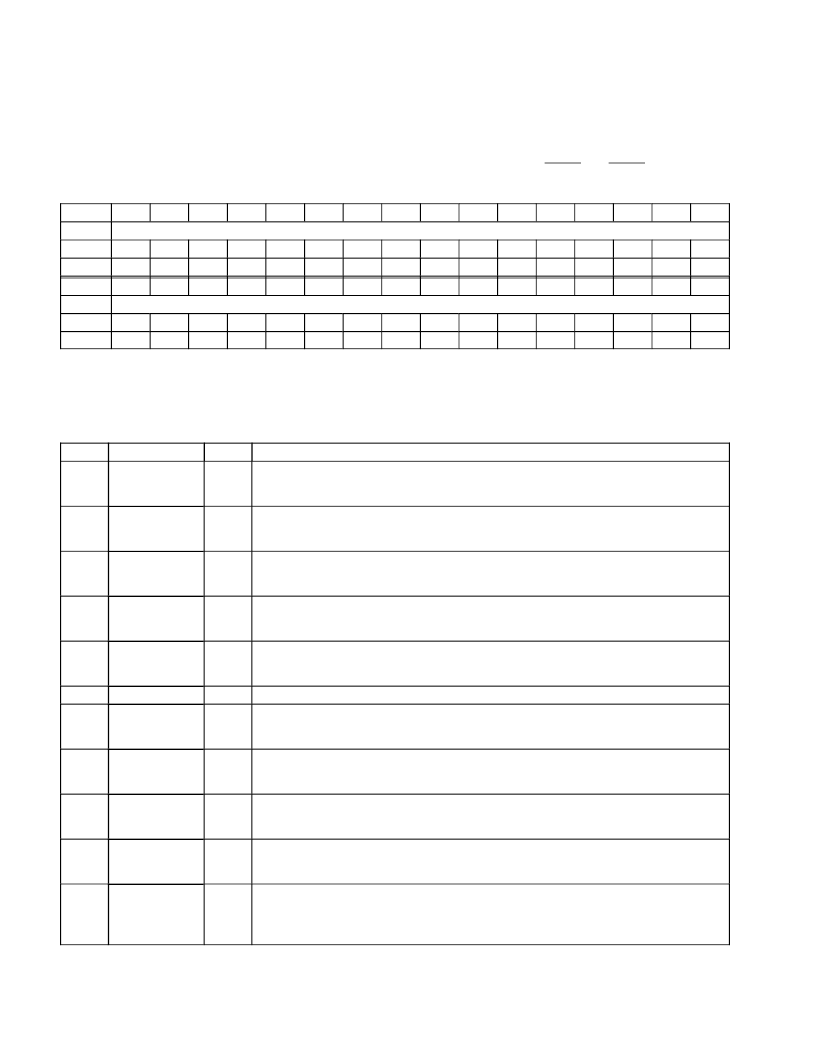
6
–
4
6.3
Socket Present State Register
This register reports information about the socket interface. Writes to the socket force event register (offset 0Ch, see
Section 6.4), as well as general socket interface status, are reflected here. Information about PC Card V
CC
support
and card type is only updated at each insertion. Also note that the PCI1620 uses the CCD1 and CCD2 signals during
card identification, and changes on these signals during this operation are not reflected in this register.
Bit
31
30
29
28
27
26
25
24
23
22
21
20
19
18
17
16
Name
Socket present state
Type
R
R
R
R
R
R
R
R
R
R
R
R
R
R
R
R
Default
0
0
1
1
0
0
0
0
0
0
0
0
0
0
0
0
Bit
15
14
13
12
11
10
9
8
7
6
5
4
3
2
1
0
Name
Socket present state
Type
R
R
R
R
R
R
R
R
R
R
R
R
R
R
R
R
Default
0
0
0
0
0
0
0
0
0
X
0
0
0
X
X
X
Register:
Offset:
Type:
Default:
Socket present state
CardBus Socket Address + 08h
Read-only
3000 00XXh
Table 6
–
4. Socket Present State Register Description
BIT
SIGNAL
TYPE
FUNCTION
31
YVSOCKET
R
YV socket. This bit indicates whether or not the socket can supply VCC = Y.Y V to PC Cards. The
PCI1620 does not support Y.Y-V VCC; therefore, this bit is always reset unless overridden by the socket
force event register (offset 0Ch, see Section 6.4). This bit defaults to 0.
30
XVSOCKET
R
XV socket. This bit indicates whether or not the socket can supply VCC = X.X V to PC Cards. The
PCI1620 does not support X.X-V VCC; therefore, this bit is always reset unless overridden by the socket
force event register (offset 0Ch, see Section 6.4). This bit defaults to 0.
29
3VSOCKET
R
3-V socket. This bit indicates whether or not the socket can supply VCC = 3.3 Vdc to PC Cards. The
PCI1620 does support 3.3-V VCC; therefore, this bit is always set unless overridden by the socket force
event register (offset 0Ch, see Section 6.4).
28
5VSOCKET
R
5-V socket. This bit indicates whether or not the socket can supply VCC = 5 Vdc to PC Cards. The
PCI1620 does support 5-V VCC; therefore, this bit is always set unless overridden by bit 6 0f the device
control register (PCI offset 92h, see Section 4.41).
27
ZVSUPPORT
R
Zoomed video support. This bit indicates whether or not the socket has support for zoomed video.
0 = ZV support disabled
1 = ZV support enabled
26
–
14
RSVD
R
These bits return 0s when read.
13
YVCARD
R
YV card. This bit indicates whether or not the PC Card inserted in the socket supports VCC = Y.Y Vdc.
This bit can be set by writing a 1 to the corresponding bit in the socket force event register (offset 0Ch,
see Section 6.4).
12
XVCARD
R
XV card. This bit indicates whether or not the PC Card inserted in the socket supports VCC = X.X Vdc.
This bit can be set by writing a 1 to the corresponding bit in the socket force event register (offset 0Ch,
see Section 6.4).
11
3VCARD
R
3-V card. This bit indicates whether or not the PC Card inserted in the socket supports VCC = 3.3 Vdc.
This bit can be set by writing a 1 to the corresponding bit in the socket force event register (offset 0Ch,
see Section 6.4).
10
5VCARD
R
5-V card. This bit indicates whether or not the PC Card inserted in the socket supports VCC = 5 Vdc.
This bit can be set by writing a 1 to the corresponding bit in the socket force event register (offset 0Ch,
see Section 6.4).
9
BADVCCREQ
R
Bad VCC request. This bit indicates that the host software has requested that the socket be powered
at an invalid voltage.
0 = Normal operation (default)
1 = Invalid VCC request by host software
